Scientific name Canis lupus familiaris Higher classification Dog | Origin Scotland | |
 | ||
Lifespan Smooth Collie: 12 – 14 years Height Rough Collie: 56 – 66 cm, Smooth Collie: 61 – 66 cm Mass Rough Collie: 20 – 34 kg, Smooth Collie: 23 – 34 kg Similar Border Collie, Shetland Sheepdog, Rough Collie, Australian Shepherd, Old English Sheepdog | ||
The Scotch Collie evolved as a landrace breed of dog that originates mainly from pastoral regions of England, Scotland and Wales. It is likely that they were descended from a variety ancient herding dogs dating back to the Rome occupation. Earliest references are spelled as "cooley", "coaly" and "colley" dogs, and there are varying opinions as to why they were called such.
Contents
- Scotch collie dog breed
- Origin
- Breed Standards
- Coat colors
- Health
- Temperament
- Famous Scotch Collies
- References
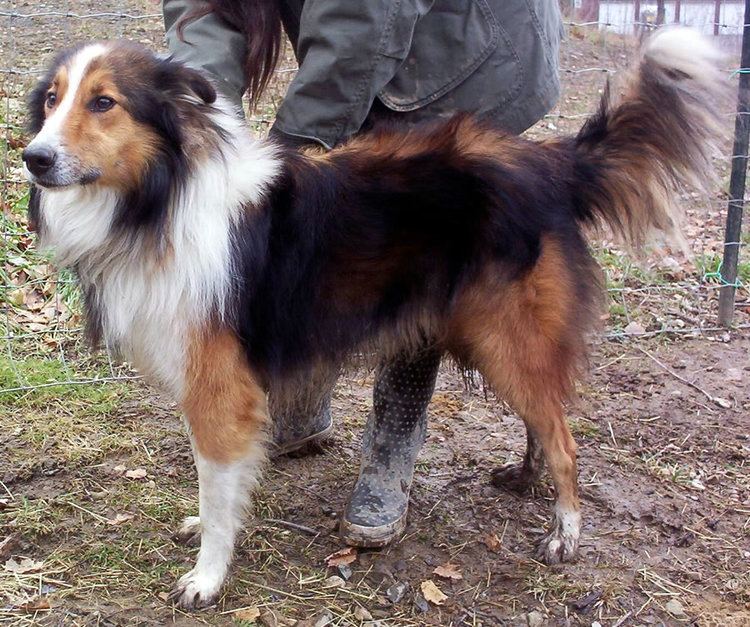
A diligent review of dogs depicted as "Scotch Collie" leading up to 1900 reveals the nature of a landrace breed. The variety of types includes a broad spectrum, both in British Isles and across the western world. Images drawn by a vast array of artists seldom depict them identical. To a novice one might think the artists were wrong in their interpretation or that images weredrawn poorly however such is not the case. All landrace breeds of animals share a certain appearance, but never with the modern concept of "breeds". They had a different approach to their animals than the typical aristocratic breeder. Their dogs were a vital part of his survival, and were critical to the success in his work. The collie dog became the way it was because it was bred solely for purpose. The pedigree seldom went past 3 generations, and until the kennel clubs began they were never bred for appearance. These men couldn't afford to take a chance on investing years on a dog. Pups were only kept from proven dogs. Breeding a dog before being proven was too expensive. Modern AKC breeders will start a female at 6 months or 1 year. This creates a breeding style that circumvents the ability to have a dog proven in health and service. Landrace dogs become naturally hardy because their appearance means nothing to their survival, rather what they can provide, how easy they are to keep, and healthy they remain. This is called Function over Form and was how all dog breeds originated.
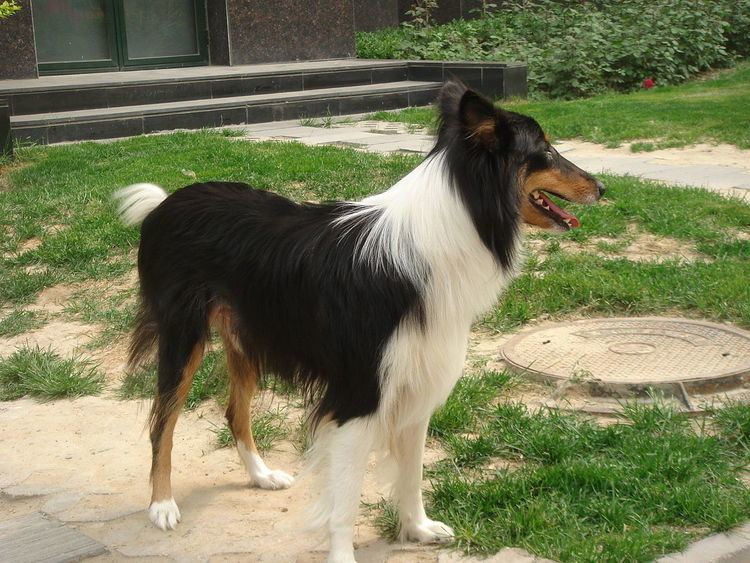
The AKC chose the name of Scotch Collie for their initial breed club. They chose from the existing population of landrace collie dogs then created an arbitrary breed standard that they chose to breed for. This standard was not a description of a typical Scotch Collie but was and is in fact, the breeders idea of what their ideal should be. These standards have changed constantly over the first hundred years of the kennel club. Eventually the AKC dropped the "Scotch" and chose to call them Rough/Smooth collies in an attempt to differentiate their dogs from the "common" Scotch collie.
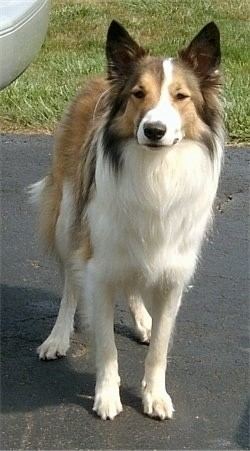
Over the years, other breed clubs were created who chose to pick a variety of Scotch Collie from the landrace and breed them toward a narrow breed standard set forth by the organization.
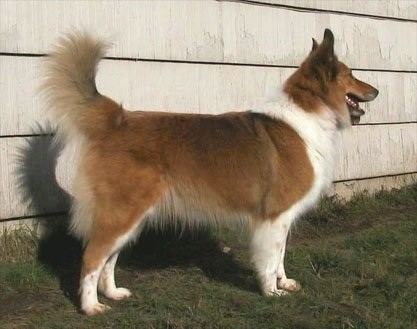
Scotch Collie descendants include several breeds such as the Border Collies, English Shepherds, Australian Shepherds, and Shetland Sheepdogs. All descend from dogs pulled from the landrace of Scotch collie dogs and were bred using kennel club breeding practices to meet certain looks. While many branches of the scotch collie were pulled from the landrace breed, the original landrace dog began to suffer from a lack of stewardship, but luckily has still survived on rural farms and ranches across the world. These lines are usually from dogs who were never associated with the kennel clubs.
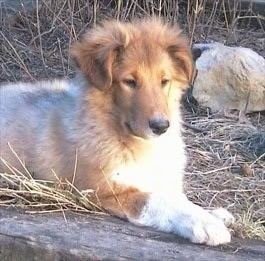
During the Victorian and Edwardian era the name was "scotch collie" was used to describe all types of Collie dogs of Scotch, American, Australian, English, Irish, and Welsh ancestry.
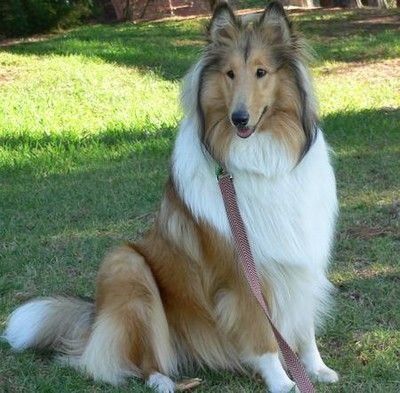
In America, the term was used to describe the entire land-race of collie dogs used on American farms. After the turn of the 20th century in America, the AKC Scotch Collie was developed using stock from the existing landrace of collies. However, this is still the same core breed -- the Collie. The modern Collie has changed physically in an effort by enthusiasts to further evolve or enhance the breed. In selecting a dog, whether for companion and protector for the family and children, as a working dog, show dog, or performance/sports dog, seek out those who have the type of dog you're interested in.
In reaction to the issues in eugenics breeding there is a backlash across the board in many AKC breeds. As there is a large grassroots push toward bringing back the genetic diversity in varying amounts. This includes the Collie dog. Quality healthy pups of collies that were previously not used for breeding simply because they didn't fit into a certain look are now beginning to be considered as part of the general landrace breed. There are several grassroots organizations that are now starting to document the pedigrees of dogs based not pedigree amddaappearance
Books such as Bob, Son of Battle (Alfred Olliphant) and Lassie Come Home (Eric Knight; later turned into a major movie) were written about the Scotch Collie of their time. Eric Knight owned "Tootsie" a purebred Scotch Collie which bears no resemblance to the dog chosen to play Lassie in the movies and TV shows.
The Scotch Collie is the ancestor of a multitude of modern dog breeds such as the Shetland Sheepdog, Australian Shepherd, English Shepherd, Border Collie, Gordon Setter, Australian Kelpie, Australian Cattle Dog, Golden Retriever, German Shepherd Dog, Nova Scotia Duck Tolling RetrieverOvelheiro GauchoSee Collie for other types of Collie and related dog types.
Scotch collie dog breed
Origin
The origin and history of the Scotch Collie is not entirely known, but we do know that it included ancestors originating in Scotland and northern England. Before this time, however, the breed has an ancestry that spans thousands of years as the Scotch Collie's ancestors had been used to herd sheep and cattle for many centuries in both the Highlands of Scotland and throughout early England. The word "collie" is thought to come from the word for "black" or "coal" in Old English. But the word could also trace to Gaelic or/and Irish, in which the words for "doggie" are, respectively, càilean and cóilean. It is also possible the word collie is of mutual English and Gaelic derivation.
The Scotch Collie breed consists of both the Rough Collie and the Smooth Collie. Both coats have existed as far back as the breed is known. However, it is believed that originally the long-haired version may have been smaller than the current dogs. Larger size could have been bred for, or it could be the result of better health and vet care.
Although the Scotch Collie and its ancestors had been used for a number of centuries as a working dog herding sheep and cattle, it was in England in the 19th century that the dog became popular as a pet and show dog rather than a working dog breed. Queen Victoria took an interest in Scotch Collies and the rest of the country soon followed suit. It was also rumoured during this time (never confirmed) that certain other breeds may have been interbred with the Collie to further physical changes in the Collie as well as to make improvements in certain other breeds like Borzoi or Gordon setter. It is not believed that any purported interbreeding, if any, made it into main lines in the breed. At this point, Scottish Collie breeders began to standardize the breed and keep written pedigree records. Scottish Collies were shown in dog shows in England as early as 1860and made its way to the United States by 1880. However, Collies reportedly arrived as early as the 1600s along with livestock shipments. By about 1886, the Scottish Collie breed was fully standardized and remains roughly the same as today. It was in this same year the Collie Club of America was formed, becoming one of the first breed clubs of the American Kennel Club which was founded in 1884.
A surge in popularity occurred in the United States during the very early 1900s, and later in the 1940s and 1950s with the release of the movie "Lassie Come Home" in 1943 and the subsequent television series that began in 1954 and ran for seventeen years. Books written by popular author Albert Payson Terhune also heloped to further popularize the breed. Mr. Terhune began his writing career in the early 1900s, and his books are still popular and available to this day.
Breed Standards
As is the case with many breeds of dogs that are still used for their original purposes, breed standards vary depending on whether the registry is more interested in a dog that performs its job superbly or a dog whose appearance meets an ideal standard.
The Scottish Collie, on the whole, has been treated mainly as a companion and show dog after its sudden rise in popularity. However, they are also used for many different types of work and sport such as agility, obedience, sledding, therapy dogs, service dogs for the disabled, etc. While the Scotch Collie (Collie) was the favored dog of farmers and ranchers since its arrival to the United States and Canada, since approximately the 1920 onward the newly named Border Collie (a Collie descendant bred primarily for work) has been the global leader as a working sheepdog and herding trials dog. Other breeds, such as the Australian Shepherd, Australian Cattle Dog, Australian Kelpie, and Ebnglish Shepherd (all Collie descendants) are also used frequently, but on a much lesser degree also dependent upon country herding dog Border Collie.
Few handlers of working herding dogs participate in conformation shows, as working dogs had primarily been bred to a performance standard rather than one based on appearance. Likewise, breeds bred primarily as companion, work/sport, or show dogs are infrequently seen on the Border Collie-type sheepdog trial field, except in Kennel Club-sponsored or speciality breed club-sponsored events. Dogs registered with either working- or conformation-based registries are seen in other performance events such as agility, obedience, tracking, rally-o or flyball, however these dogs do not necessarily conform to the breed standard of appearance as closely as the dogs shown in the breed rings as this is not a requirement in performance events, nor do they necessarily participate in herding activities. This has all been changing as well—for example the Border Collie, heretofore once only bred as a working dog only, has changed dramatically in physical appearance and behavior with the recognition of the breed in The Kennel Club (England), the American Kennel Club, and other modern breed registries. The conformation, temperament and character bred dogs have taken on a standardized appearance, are calmer in demeanor (trial lines Border Collies generally have OCD—obsessive compulsive disorder), coatier, with heavier bone, and squarer bodies. The availability of a variety of colors have exploded with the advent of the Border Collie in the "breed ring" (conformation ring) -- besides the commonly seen black and white, there are blue merles, black and tans, solid blacks, pale cream and white, diluted colors, etc.
Coat colors
As modern-day "Lassies", Collies have become successful assistance, and therapy dogs. At least one guide dog school (Southeastern Guide Dogs in Florida) currently trains Collies as guide dogs, and a number of Collies are currently partnered with disabled individuals around the United States.
Health
The Scotch Collie is typically a very healthy breed, and is known to inherit few health conditions that are both serious and prevalent. Some health conditions of note include Collie eye anomaly, progressive retinal atrophy, gastric torsion, dermatomyositis, grey collie syndrome (a type of neutropenia), collie nose (discoid lupus erythematosus), and demodicosis. Seizures, canine hip dysplasia, microphthalmia, and cyclic neutropenia are also occasionally seen. The Collie Health Foundation (http://www.colliehealth.org) maintains a website and database on disorders affecting collies.
Some Scottish Collies (and other collie breeds) have a particular allele of the multi-drug resistance gene, MDR1. This is also known as "the ivermectin-sensitive collie", however the sensitivity is not limited to ivermectin, a common drug used to treat and prevent various ailments in dogs including heartworm disease. More than 20 drugs are expected to cause adverse reactions including milbemycin and loperamide. A study by the Veterinary Genetics Laboratory at UC Davis concluded that all dogs with this mutation are descendants of a single dog which most likely lived in Great Britain during the middle of the 19th century.
The mutation of the MDR1 gene is found in Scottish Collies and related breeds worldwide and affects approximately 80% of Scottish Collie dogs in the United States. Dogs with this mutation are predisposed to various sensitivities and some may suffer a potentially fatal neurotoxicosis.
Ivermectin is a popular choice in the prevention of heartworm disease in dogs, an extremely serious and potentially fatal condition. Despite the high prevalence of sensitivity in Scottish Collies to this medication, the low dosage provided is generally considered safe and preventative drugs such as Heartgard are advertised as approved for Scottish Collies, having a wide margin of safety when used as directed. A simple test, recently developed at and provided by Washington State University, can determine if a dog is a carrier of the mutation which causes sensitivity. [2]
Scotch Collies typically live an average of 12 to 14 years.
Temperament
Scotch Collies are known to be generally sweet and protective. They are generally easy to train due to a high level of intelligence and a willingness to please. Some are a bit clingy, but this is often seen as an overdeveloped sense of loyalty. They are excellent herding dogs and benefit from the companionship of a family or other dogs. Scotch Collies are very playful and gentle around children. They can also exhibit a strong herding instinct, especially around children.
Herding instincts and trainability can be measured at noncompetitive herding tests. Scotch Collies exhibiting basic herding instincts can be trained to compete in herding trials.
